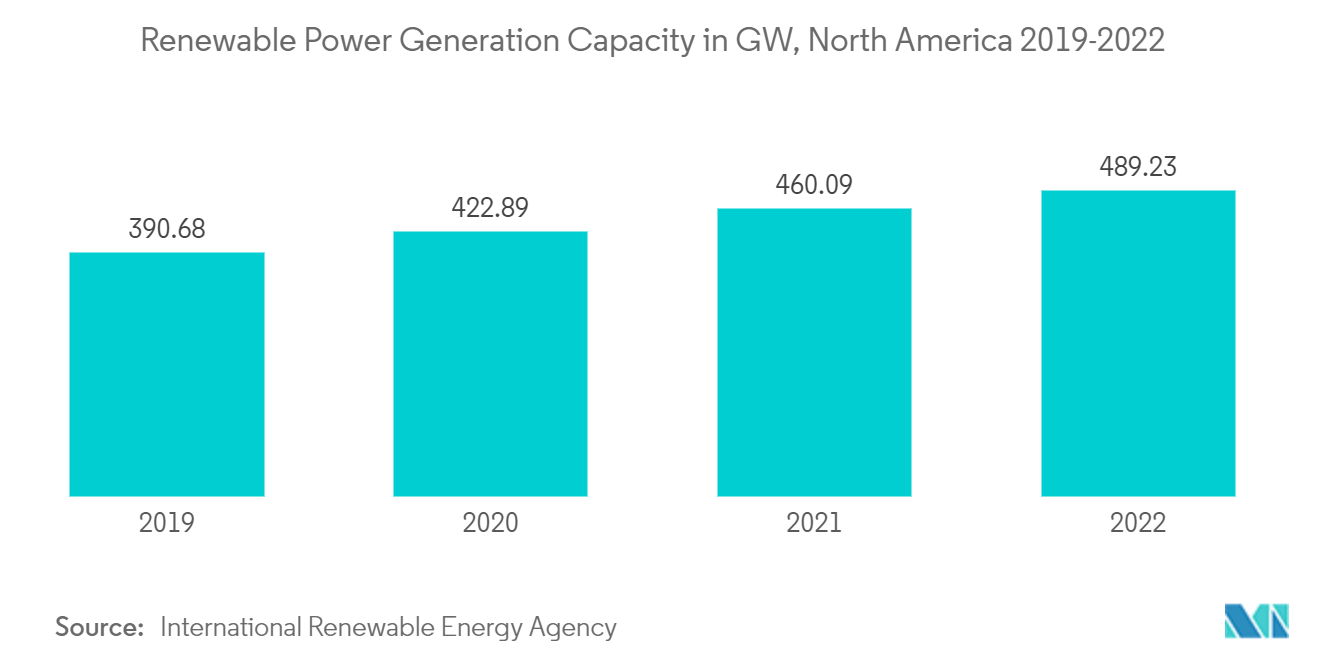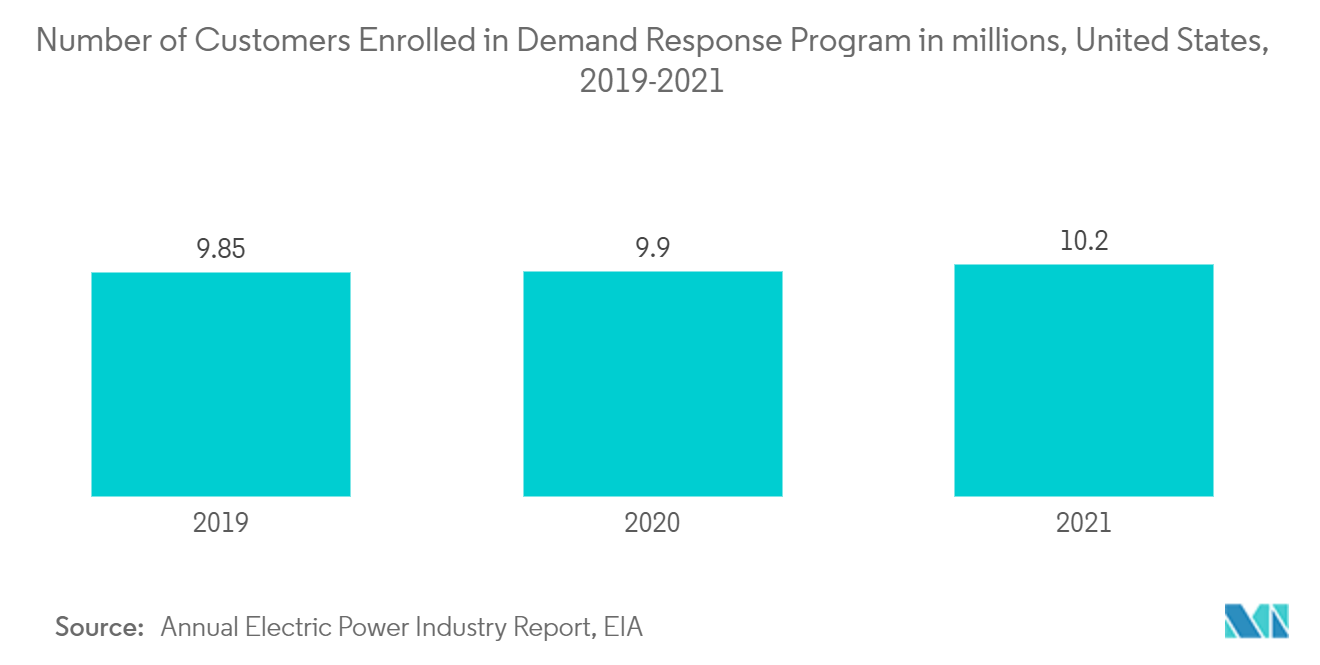Market Trends of North America Automated Demand Response Management System Industry
Increased Penetration of Renewable Energy to Drive the Market
- Renewable energy power sources are intermittent, and they fluctuate over time. For instance, solar power and wind power plants are heavily dependent on weather conditions.
- Implementation of demand response management system can help by ensuring that when such disruptions happen, demand can be reduced, in order to meet the supply demand balance. In contrast to energy storage, which aims to reallocate supply to times of greater demand, DRMS aims to reallocate demand to times of increased supply-demand gap, hence, addressing the problems on the both sides.
- Demand response controls coupled with on-site generation using geothermal, solar, wind, biomass, or landfill-gas-to-energy provide the off-grid power needed to keep facilities running, while reducing energy use from the grid. Demand response present potentially important sources of bulk power system services that can aid in integrating variable renewable generation.
- Apart from that, some utility companies have expanded the scope of demand-response system, by proving the dynamic electricity prices for their consumers for not only consumption but also for selling electricity back to the grid. For example, during peak hours, the consumers can get higher prices for selling the electricity back to the grid system. The enhanced scope of the demand-response system is expected to help integrating not only the utility-scale but also small, residential renewable sources in the power generation system.
- Moreover, with government assistance, energy security, and declining costs, the renewable energy sector is expected to register significant growth, in turn driving the North America demand response management systems market during the forecast period.

United States To Drive the Market
- Demand response programs typically offer customers a rebate or lower energy costs for reducing energy use during specified hours or allowing the utility to cycle their air-conditioning systems when needed.
- Advanced meters are the most prevalent type of metering deployed throughout the United States, accounting for more than 50% of all meters installed and operational in the country. Adding to this, the total number of customers enrolled under the demand response programs in the United States reached around 10.2 million (including residential, commercial, industrial, and transportation), representing an increase of 6.1% from 2013's value. Of all the customers enrolled in the demand response program, residential customers accounted for more than 93% in 2020 and the remaining share was distributed among the industrial and transportation customers.
- In May 2022, NJR Clean Energy Ventures (CEV) started construction on an 8.9-MW floating solar installation in Millburn, New Jersey, which is expected to be the largest floating array in the United States. The project uses a floating racking system, with 16,510 solar panels that are likely to be installed on a reservoir located at the New Jersey American Water Canoe Brook Water Treatment Plant.
- Demand Response (DR) has been in existence in the United States for many years. DR system allows and encourages consumers to temporarily switch off, turn down or shift the nonessential electricity in a reliable, fast, cost-effective, and automated fashion.
- Moreover, in 2021, electric utilities in the United States had about 111 million advanced (smart) metering infrastructure (AMI) installations, representing an increase of around 10% over the previous year's value. About 88% of the AMI installations were residential customer installations. Plans and requirements for the installation of smart meters adopted in more than 11 states across the country appear to be paying off significant increases in meter penetration rates.
- This, increasing trend in the smart/ AMI meter installations in the country is expected to boost the smart grid infrastructure, thereby, increasing the demand for ADRMS in the coming years.


